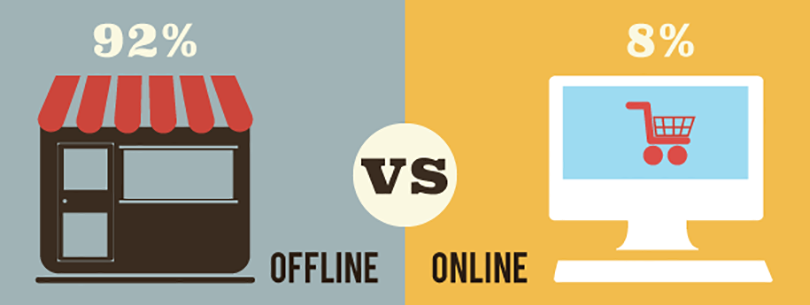
ngrok: Public domains for local dev environments, even Laravel Homestead
Give your local Laravel Homestead VM a temporary public domain in seconds.



How to keep pace in an increasingly complex retail marketing landscape.
For the past 5 years — and probably more — digital agencies pushed every retailer to embrace omnicommerce. It was probably a good idea at the time since Amazon was eating everyone’s lunch. It made sense to try to beat Amazon at the digital game.
Definition of Omnicommerce: Uniting marketing efforts and the shopping experience across brick-and-mortar, digital and mobile platforms to provide customers with consistent, streamlined shopping.
5 years later Amazon is still eating all our lunches. So is omnichannel the best strategy for every retailer? We don’t think so. Our philosophy is that merchandise is key, and the digital experience needs to get out of the buyer’s way and make it as easy as possible to shop whether that’s in-store or online.
We encourage our clients to build digital experiences that support their brick and mortar strategy while providing a seamless online buying experience.
A 2016 Harvard Business Review study showed that almost 92% of all purchases are still happening in stores vs. 8% online. That’s still a lot of in-store purchases.

Image Credit: Ripen Ecommerce
So, what happens when a digital agency pushes omnichannel and the retailer ends up with both declining online and offline sales? Kevin Hillstrom of Mine That Data regularly talks about what happens when retailers ignore the importance of merchandise and focus on the wrong metrics or technology.
Barnes & Noble is suffering from this strategy now:
“Although consumer spending was generally strong this holiday season, not all retailers reaped the rewards. At Barnes & Noble, 2017 holiday sales fell more than 6 percent to $953 million, compared with the year prior. Same-store sales fell 6.4 percent for the holiday period, while online sales dropped 4.5 percent….The stock has fallen more than 55 percent from a year ago.” – CNBC
In this example, facing the competition of Walmart.com and Amazon.com, B&N embraced the omnichannel approach that pundits have been pushing, and failed to deliver a compelling in-store experience. Their customers weren’t happy.
But take heart. The future can be optimistic despite all the talk of retail Armageddon. (Remember, 92% of sales still take place offline). At least it’s a bright future for retailers willing to adapt to the changing market.
Now that more and more is ordered online, or experienced online, the only trips we take are special trips. If your offering, your service or your place isn’t worth a special trip, it’s likely we won’t be coming by any time soon.
– From Seth Godin: Worth a special trip
When retailers build a memorable experience (whether that’s online or off), it builds a relationship with the customer. Unifying that offline experience with targeted digital gives people a good reason to come back to shop in person or on your website. Otherwise, it’s just easier to jump over to Amazon to order.
Sources and citations
[1] Retail’s Main Event: Brick & Mortar vs. Online, RetailNext
**https://www.shopify.com/retail/how-to-future-proof-your-brick-and-mortar-store
**https://hbr.org/2016/05/the-best-retailers-combine-bricks-and-clicks
**http://sethgodin.typepad.com/seths_blog/2018/02/worth-a-special-trip.html
**https://twitter.com/minethatdata
VOLTAGE is a digital agency specializing in eCommerce, digital brand experiences, and web apps. Get emails and insights from our team:

Give your local Laravel Homestead VM a temporary public domain in seconds.

Want to improve the functionality of your fashion and apparel site? Check out these easy-to-install options for enhanced security, analytics and more.